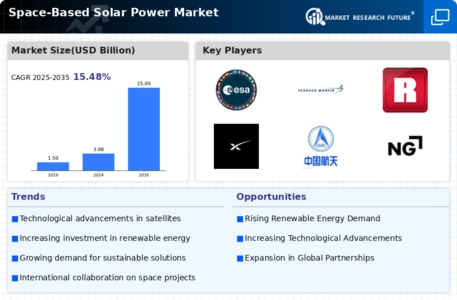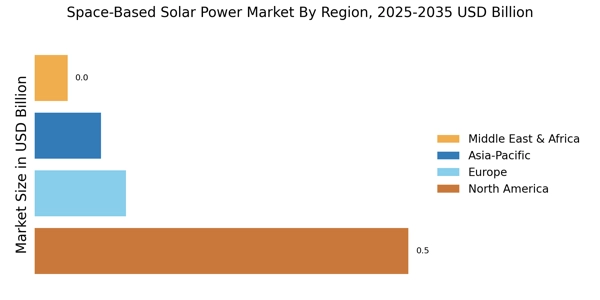Increasing Energy Demand
The Space-Based Solar Power Market is poised to benefit from the escalating global energy demand. As populations grow and economies expand, the need for sustainable and reliable energy sources intensifies. According to recent estimates, energy consumption is projected to increase by approximately 30% by 2040. This surge in demand necessitates innovative solutions, and space-based solar power presents a viable alternative. By harnessing solar energy in space, the industry can provide a continuous and abundant energy supply, mitigating the challenges associated with terrestrial energy sources. The potential for large-scale energy generation from space could significantly alleviate pressure on existing energy infrastructures, thereby positioning the Space-Based Solar Power Market as a critical player in meeting future energy needs.
Technological Innovations
Technological advancements are a driving force within the Space-Based Solar Power Market. Innovations in satellite technology, energy transmission, and solar panel efficiency are enhancing the feasibility of space-based solar power systems. For instance, recent developments in wireless power transmission could enable the efficient transfer of energy from space to Earth. The industry is witnessing a surge in research and development activities, with investments in cutting-edge technologies aimed at improving energy capture and transmission capabilities. As these technologies mature, they are likely to reduce costs and increase the viability of space-based solar power projects, thereby attracting more stakeholders and investors to the Space-Based Solar Power Market.
International Collaboration
International collaboration is emerging as a pivotal driver for the Space-Based Solar Power Market. As the challenges of energy security and climate change transcend national borders, countries are increasingly recognizing the need for cooperative efforts in space-based solar initiatives. Collaborative projects can pool resources, expertise, and technology, thereby enhancing the overall effectiveness of space-based solar power systems. For instance, joint missions involving multiple nations could lead to the development of advanced solar satellites and efficient energy transmission methods. This collaborative approach not only accelerates technological advancements but also fosters a sense of shared responsibility in addressing global energy challenges, positioning the Space-Based Solar Power Market as a key player in the future energy landscape.
Environmental Considerations
The Space-Based Solar Power Market is increasingly recognized for its potential to address environmental challenges. As concerns over climate change and pollution grow, the demand for clean energy solutions intensifies. Space-based solar power offers a unique advantage by providing a renewable energy source that does not contribute to greenhouse gas emissions. Furthermore, the ability to generate energy in space minimizes land use and habitat disruption on Earth. This environmentally friendly approach aligns with global sustainability goals, making the Space-Based Solar Power Market an attractive option for governments and organizations seeking to reduce their carbon footprints. The industry's commitment to sustainability could drive further investment and development in the coming years.
Government Support and Policy Frameworks
Government initiatives and supportive policy frameworks are crucial drivers for the Space-Based Solar Power Market. Many countries are recognizing the strategic importance of energy independence and sustainability, leading to increased funding and support for space-based solar projects. Policies that incentivize research and development, as well as public-private partnerships, are likely to foster innovation within the industry. For example, several nations have established space agencies dedicated to exploring solar power technologies, which could enhance collaboration and resource sharing. This supportive environment may accelerate the growth of the Space-Based Solar Power Market, as stakeholders seek to capitalize on favorable regulatory conditions and funding opportunities.


















Leave a Comment